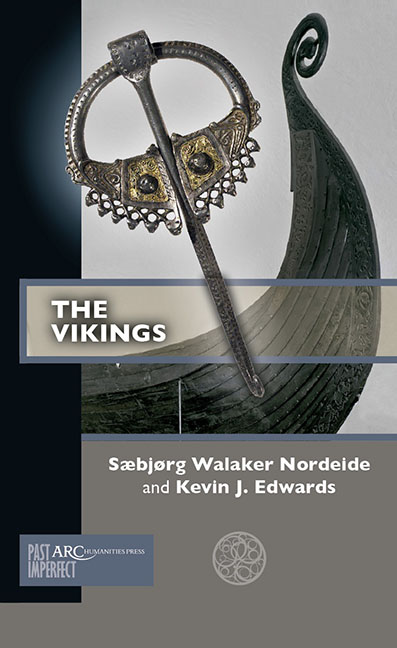Chapter 2 - Viking Age Scandinavia
Published online by Cambridge University Press: 20 November 2020
Summary
Scandinavia was composed of an amalgam of peoples in the Viking Age, but depictions of the period tend to make the population appear more uniform than it was in reality— part of the process of creating a national history of modern Sweden, Norway, and Denmark. Even so, if individuals living outside Scandinavia had inter-married or otherwise become entwined with people of non-Norse ethnicities, they themselves might well have still identified with Scandinavia, particularly if Old Norse was their principal language. It thus seems appropriate for a study of the Vikings to take Scandinavia as a starting point.
Sources of Viking Scandinavia are poorer than are found in contemporary Christian Europe. The Latin alphabet was introduced by the Church in Scandinavia, and although written sources suggest that missionaries arrived earlier, Christi-anity was not established formally until towards the end of the Viking Age, that is the late tenth and early eleventh century. Christianity began earlier in Denmark than in other Scandinavian countries, starting with the social elite. Even at that, few people became Christian, and non-Christian, illiterate groups persisted in various parts of Scandinavia. During most of the Viking Age, writing in Scandinavia consisted mainly of simple, short inscriptions (runes) on stone, bone, or wood and literacy was of a low order. The runic alphabet changed from twenty-four runes in the early Iron Age to sixteen runes (the so-called younger futhark [= alphabet]) in the late Iron Age, including the Viking Age. The order of runes was consistent, but there was a greater variation of forms in the Viking Age. The reduction in the number of runes also reduced their precision because individual runes could have several meanings. A formulation such as “X erected this stone after Y” is typical. Uppland in Sweden has more than one thousand rune stones, often decorated, and displaying a similar format (Figure 2).
Economy and Settlement
The Viking Age economy of Scandinavia was a mixture of arable agriculture, animal husbandry, fishing, and hunting, along with the gathering of terrestrial and marine resources. Of critical importance to Scandinavia, as in northern lands elsewhere, was the need to acquire winter fodder for the over-wintering of domesticated animals.
- Type
- Chapter
- Information
- Vikings , pp. 13 - 46Publisher: Amsterdam University PressPrint publication year: 2019



